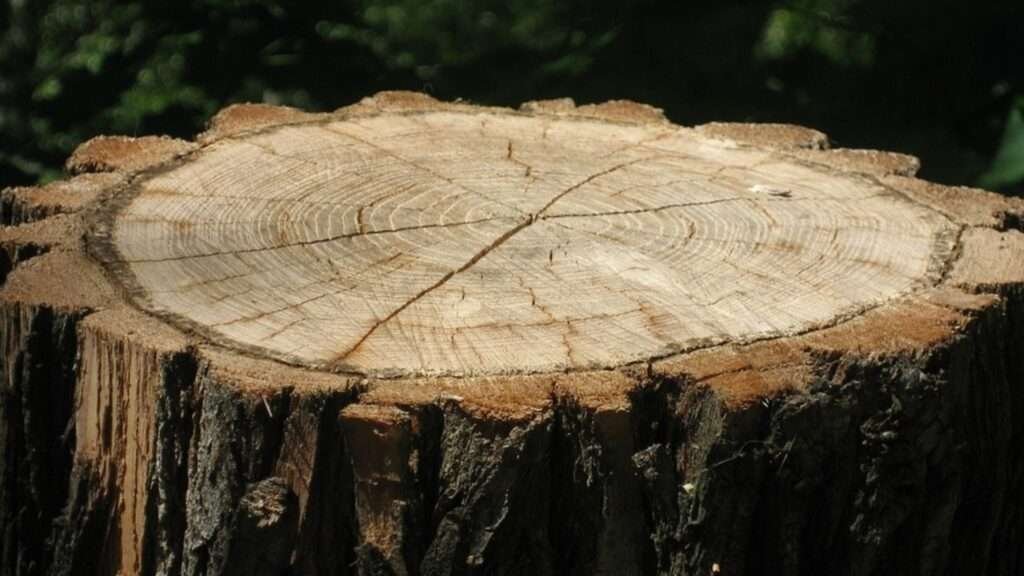A Guide For Understanding Wood Anatomy And Structure.
This article is intended to serve as a helpful guide to wood anatomy and structure as it explores the internal makeup of wood, focusing on its cellular composition, annual rings, grain patterns, and density.
It emphasizes the importance of understanding these aspects for various applications, including construction, furniture making, paper production, and forestry, highlighting how knowledge of wood anatomy influences both aesthetic and functional outcomes.
I’ll do my best to explain how tree physiology and growth patterns contribute to the overall properties of wood, underscoring the interconnectedness of environmental factors and wood characteristics.
Below are the five main takeaways from this article:
1. Understanding wood anatomy is crucial for various applications, including forestry, construction, and woodworking, as it offers insights into the properties and characteristics of different wood types. This knowledge allows professionals to make informed decisions about wood utilization and management.
2. Wood is composed of three primary cell types: fibres, vessels, and parenchyma cells. Fibres provide strength and support. Vessels, mainly found in hardwoods, transport water and nutrients. Parenchyma cells act as storage units.
3. Annual rings, or growth rings, provide valuable information about a tree’s life. They form due to seasonal changes in growth, with each ring generally representing a year. Wider rings usually indicate faster growth and less dense wood, while narrower rings suggest slower growth and greater density.
4. Grain patterns are essential for both the look and function of wood. These patterns, determined by growth rings, influence the wood’s strength, stability, and how it accepts finishes. Different grain types, like straight, wavy, and interlocked, have distinct visual and mechanical properties.
5. Wood density significantly impacts the mechanical performance and usability of wood. Higher density wood is often favoured for structural applications due to its strength and durability, while lower density wood is preferred where lightweight properties are beneficial.
1.0 Introduction to Wood Anatomy.
Wood anatomy refers to the study of the internal structure and composition of wood. Understanding wood anatomy is crucial for various applications such as forestry, construction, and woodworking, as it provides insight into the properties and characteristics of different types of wood.
The internal structure of wood is primarily composed of cellulose, hemicellulose, and lignin, each contributing to its strength, durability, and flexibility.
By examining these components, professionals can determine how a particular wood species will perform in different environments.
The study of wood anatomy encompasses the arrangement and type of cells within wood, including vessel elements, fibres and parenchyma.
This cellular organization affects the wood’s mechanical properties and its response to biological and environmental factors.
For instance, hardwoods, which typically exhibit a more complex structure than softwoods, tend to offer greater strength and durability, making them preferable for furniture and construction materials.
Understanding these distinctions is essential for selecting suitable wood for specific applications.
Additionally, knowledge of wood anatomy plays a significant role in the forestry industry.
It aids in the identification of different tree species and helps foresters manage resources sustainably.
Proper management practices ensure that the quality and characteristics of wood are preserved for future generations.
Furthermore, insights gained from examining wood structure are applicable in woodworking, where craftsmen can utilize specific wood types to achieve desired aesthetic and functional qualities in their projects.
In this article, I’ll be delving deep into wood anatomy and structure, exploring its implications across various fields and emphasizing the importance of understanding this subject in making informed decisions in wood utilization and management.
2.0 Cellular Composition of Wood.
The cellular composition of wood plays a pivotal role in determining its structural properties and functionality.
Wood is primarily composed of three types of cells: fibres, vessels, and parenchyma cells, each serving distinct purposes that contribute to the overall characteristics of the material.
Fibres are elongated cells that provide tensile strength and mechanical support to the wood.
These cells are organized in a manner that allows them to withstand various forces, making wood a highly durable material.
The arrangement and density of fibres can vary across different species, which explains the variation in hardness and elasticity. Hardwoods generally possess a higher fibre content than softwoods, resulting in greater strength and durability.
Vessels are another key component of wood, primarily found in hardwoods. These tubular structures facilitate the transport of water and nutrients throughout the tree.
Vessels vary in size and arrangement based on the species; larger vessels tend to increase water transport efficiency, while smaller vessels contribute to structural stability.
The presence and format of vessels in wood influence its workability as well, affecting how easily it can be cut, shaped, or finished.
Parenchyma cells serve as storage structures within the wood, housing starches, fats, and other metabolites necessary for the tree’s growth and repair.
While they do not provide significant structural support, they contribute to wood’s overall physiology and may affect its physical properties, such as weight and moisture retention.
In conclusion, the cellular make-up of wood, encompassing fibers, vessels, and parenchyma cells, is essential in defining its strength, durability, and workability.
Understanding these components allows for a deeper appreciation of wood as a natural material, influencing its application across various industries.
3.0 The Role of Annual Rings in Wood Properties.
Annual rings, often referred to as growth rings, are a significant aspect of wood anatomy and structure, revealing critical information about a tree’s growth and environmental conditions. These rings form as a result of the tree’s response to seasonal changes.
Typically, the growth cycle of a tree is divided into two main phases: the active growing season during spring and summer, and a dormant phase in the fall and winter.
In spring, the tree produces large, water-rich cells to capitalize on the abundance of moisture.
This phase, known as earlywood or springwood, is characterized by lighter-coloured and less dense wood.
Conversely, during the late summer and early autumn, the tree generates smaller, thicker-walled cells to conserve resources, resulting in what is known as latewood or summerwood.
The combination of these distinct layers forms the annual rings, wherein each complete cycle usually represents one year of growth.
The width and density of these annual rings can vary considerably depending on environmental factors, such as climate, soil quality, and water availability.
For instance, a year with optimal growth conditions typically results in wider and more robust rings, while periods of drought or other stressors will yield narrower and denser rings.
This variability plays a pivotal role in determining the overall strength and durability of the wood.
Wide rings often correlate with faster growth and, consequently, less dense wood, while narrow rings suggest slower growth and greater density.
Understanding annual rings is crucial for various applications, including dendrochronology, the study of climatic changes over time, and timber quality assessments.
By analysing these rings, researchers and woodworkers can glean insights into a species’ growth patterns, making this anatomical feature fundamental to the study of wood properties.
Annual rings are not merely aesthetic features; they are vital indicators of a tree’s life history and provide a valuable perspective on the factors influencing wood characteristics.
4.0 Significance of Grain Patterns.
Grain patterns in wood, often referred to as wood grain, are crucial for both aesthetic and functional purposes.
These patterns are primarily determined by the growth rings, which indicate how the tree has developed over time.
Different types of grain, such as straight, wavy, and interlocked, have distinct visual properties that can significantly enhance the beauty of wooden items.
For instance, straight grain is characterized by lines that run parallel to the length of the wood, offering a uniform appearance that is often preferred for high-end furniture and cabinetry.
Wavy grain, on the other hand, features undulating lines that create visual movement, adding a unique character to pieces like tabletops or accent furniture.
Interlocked grain, common in species like mahogany and cherry, results from the tree’s growing environment and can contribute to a dramatic appearance, but can also pose challenges during woodworking due to its tendency to tear during processing.
Beyond aesthetics, grain patterns play a pivotal role in the performance of wood. The orientation and type of grain can affect the strength and stability of the wood. For instance, straight-grained wood typically has superior tensile strength, making it ideal for structural applications.
In contrast, wood with irregular grain patterns may be more susceptible to warping or splitting, impacting durability.
Furthermore, the grain influences how wood accepts finishes and stains; finer, straight grains may produce a smoother finish, while more pronounced grain patterns can result in a textured, visually rich appearance.
Ultimately, understanding the significance of grain patterns in wood is essential, whether one is selecting materials for construction, furniture making, or decorative purposes.
The interaction between grain and both functional and aesthetic qualities cannot be overstated, marking it as a fundamental aspect of wood anatomy and structure.
5.0 Impact of Spring-Wood and Summer-Wood on Timber Quality.
Wood is a complex natural material that is fundamentally influenced by its growth patterns, particularly through the formation of spring-wood and summer-wood.
Spring-wood, also known as earlywood, is produced during the initial phase of the growing season when conditions are typically more favourable, such as ample moisture and warmth.
This type of wood has larger vessel elements, which allows for a more significant transport of water and nutrients.
Consequently, spring-wood tends to be lighter, less dense, and more porous compared to its counterpart, summer-wood.
On the other hand, summer-wood, also referred to as latewood, forms later in the growing season, characterized by more challenging environmental conditions. The growth during this period results in smaller, thicker-walled cells, leading to increased density and strength.
The contrast between spring-wood and summer-wood is crucial in understanding timber quality.
Together, these two types of wood contribute to a tree’s overall structural integrity and mechanical properties, which play a significant role in various applications.
The proportion of spring-wood to summer-wood within a timber sample is paramount for assessing its performance for specific uses.
Timber with a higher ratio of summer-wood typically exhibits enhanced strength and durability, making it suitable for structural applications like beams and posts.
In contrast, timber that incorporates more spring-wood may be lighter and more aesthetically appealing, making it ideal for applications such as cabinetry or decorative elements.
What’s more is that the aesthetic qualities of timber, such as colour and grain patterns, are also influenced by these growth patterns.
The unique characteristics contributed by both spring-wood and summer-wood can enhance the visual appeal of wood products, thus affecting their market value.
Understanding the differences between these wood types is essential for selecting the appropriate timber for construction, furniture-making, or artistic endeavours, ensuring both functional performance and aesthetic satisfaction.
6.0 Wood Density: A Key Property.
Wood density is a fundamental property that significantly influences the mechanical performance, stability, and overall usability of wood.
Defined as the mass per unit volume, wood density affects various characteristics such as strength, weight, and durability.
It primarily results from the cellular structure of wood, which is composed of lignin and cellulose.
The density of wood varies among species, with denser woods typically demonstrating greater strength and load-bearing capacity.
For instance, hardwoods like oak and maple have higher densities than softwoods such as pine and fir, making them suitable for applications that require strength and durability.
Density plays a crucial role in determining the suitability of wood for specific construction or manufacturing purposes.
Higher density wood is often preferred in applications requiring structural integrity, such as beams and flooring, while lower density wood is favoured in situations where lightweight properties are beneficial, such as in airplane components.
Additionally, wood density influences the wood’s ability to resist wear, provide insulation, and absorb moisture.
As density increases, so too does the wood’s typically higher resistance to environmental factors, such as pests and decay.
Wood selection based on density can also impact the aesthetic qualities of a project. Denser woods often exhibit more pronounced grain patterns and richer coloration, which can enhance visual appeal.
In woodworking and carpentry, understanding the relationship between density and various wood properties enables craftsmen to choose the right material for their intended use, whether it be for furniture making, flooring, or cabinetry.
Ultimately, recognizing the importance of wood density and its variance across different species assists professionals in making informed decisions that align with the specific requirements of their projects.
7.0 Growth Patterns and Tree Physiology.
Tree physiology plays a vital role in understanding wood anatomy and structure. The growth patterns of trees are closely linked to their physiological processes, which include photosynthesis, respiration, and the transport of nutrients.
These processes are influenced by various environmental factors such as soil quality, climate, and water availability. Together, they determine both the development and quality of wood.
One of the primary factors affecting growth patterns is soil quality. Nutrient-rich soil supports robust tree growth, which in turn enhances the formation of wood fibres.
Trees obtain essential minerals and nutrients from the soil, which are crucial for photosynthesis and cellular processes. Moreover, soil pH, texture, and organic matter content can influence tree health and wood quality.
For instance, trees growing in well-aerated soils with adequate drainage tend to have stronger structures compared to those in compacted or waterlogged soils.
Climate is another significant factor influencing tree growth. Temperature variations, precipitation levels, and seasonal changes affect the rate of photosynthesis and respiration, which determines overall wood formation.
In areas with ample rainfall, trees can achieve a greater girth and better wood density due to adequate water availability.
Conversely, in arid climates, trees may experience stress, leading to reduced growth and poorer quality wood.
Water availability is critical to tree physiology, as it is essential for nutrient transport and photosynthesis.
Trees in drought-prone regions may develop adaptations to minimize water loss, such as smaller leaves or deeper root systems.
These adaptations can significantly impact the tree’s growth patterns and ultimately influence the anatomy of the resultant wood.
By understanding these relationships between environmental factors and growth patterns, we gain insights into how trees develop, as well as the quality and types of wood they produce.
8.0 Applications of Wood Anatomy Knowledge.
Understanding wood anatomy and structure is not merely an academic exercise; it has profound implications across various industries.
In furniture making, for example, knowledge of wood properties leads to better material selection. Different species possess unique characteristics that affect durability, grain patterns, and aesthetic appeal.
By knowing which type of wood is best for specific applications, artisans can create more resilient and attractive furniture.
Additionally, the grain orientation, density, and moisture content play significant roles in how well a piece will withstand wear and environmental changes.
In the construction industry, wood anatomy is equally crucial. Builders leverage an understanding of wood species to choose appropriate materials for structural elements.
For instance, softwoods such as pine are often used for framing due to their workability and availability, yet hardwoods like oak and maple provide excellent properties for flooring and cabinetry.
Recognizing the distinctions between these types of wood can improve building integrity and lifecycle performance.
Besides, with growing emphasis on sustainability, knowledge of wood anatomy aids in the selection of sustainably sourced materials, further enhancing building practices.
Another area where wood anatomy plays a vital role is in paper production. The characteristics of wood fibres, such as length, flexibility, and strength, determine the quality of the paper produced.
Understanding these anatomical properties allows manufacturers to choose the right type of wood to optimise the production process.
It also leads to innovations in recycling and repurposing wood products, resulting in more eco-friendly practices.
As industries evolve, a comprehensive understanding of wood anatomy will continue to drive innovation and efficiency, ultimately benefiting both manufacturers and consumers.
9.0 Conclusion.
Understanding wood anatomy and structure is essential for various stakeholders, including builders, craftsmen, and scientists.
Throughout this article, I have delved into the intricate details of wood’s composition, exploring the cellular structure and the various types of wood available.
This knowledge not only aids in making informed decisions when selecting materials but also enhances the quality of craftsmanship in woodworking practices.
For builders, a deep understanding of wood anatomy translates to better construction practices.
By recognizing the differences between hardwoods and softwoods, builders can select the appropriate type of wood suited for specific applications, taking into consideration factors like strength, durability, and resistance to decay.
This ensures that structures remain safe and resilient over time, ultimately reducing maintenance costs.
Wood craft tradies, on the other hand, benefit from this knowledge by enhancing their skills and techniques.
Familiarity with variations in wood density, grain patterns, and moisture content allows craftsmen to create superior furniture and artistic pieces that exemplify both beauty and functionality.
Understanding the anatomical features of various wood species inspires creativity and helps artisans avoid common pitfalls, thereby increasing the longevity of their creations.
Furthermore, scientists and researchers exploring wood anatomy contribute to advancements in environmental sustainability and conservation.
By studying different wood structures, they can work toward improving harvesting practices and developing treatments that protect wood from pests and diseases.
This research is vital for preserving forest ecosystems while maintaining the economic viability of the timber industry. Understanding wood anatomy and structure is integral to the success of various fields.
Whether it is improving the quality of construction, fine-tuning craftsmanship, or contributing to scientific research, when we are equipped with this type of knowledge, it supports optimal practices and sustainable development in the woodworking community and beyond.








